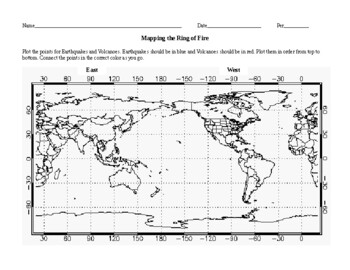Mapping the Ring of Fire Worksheet with keys for Earthquakes and Volcanoes.
- Word Document File
What educators are saying
Description
This is great worksheet to show students how a seismologist would collect seismic data and plot the coordinates on a map. The coordinates map out the boundaries of the Ring of Fire. You might have to spend a little time teaching the students how to read longitude and latitude but if they have had any experience graphing coordinates in Math then it shouldn't be too difficult. The biggest problem is the East is on the left side of the map and West is on the right. I had to spend a little time with a globe to review the Earth and that helped explain why the map is set up the way it is. This worksheet also shows events that occur along the Mid Atlantic Ridge and the Mediterranean Zone.
Disclaimer: Some plotted points may not show the exact location of some actual events.



